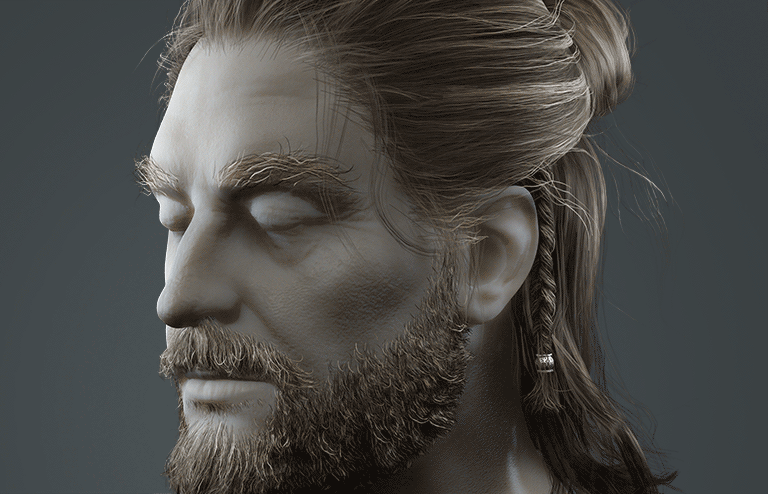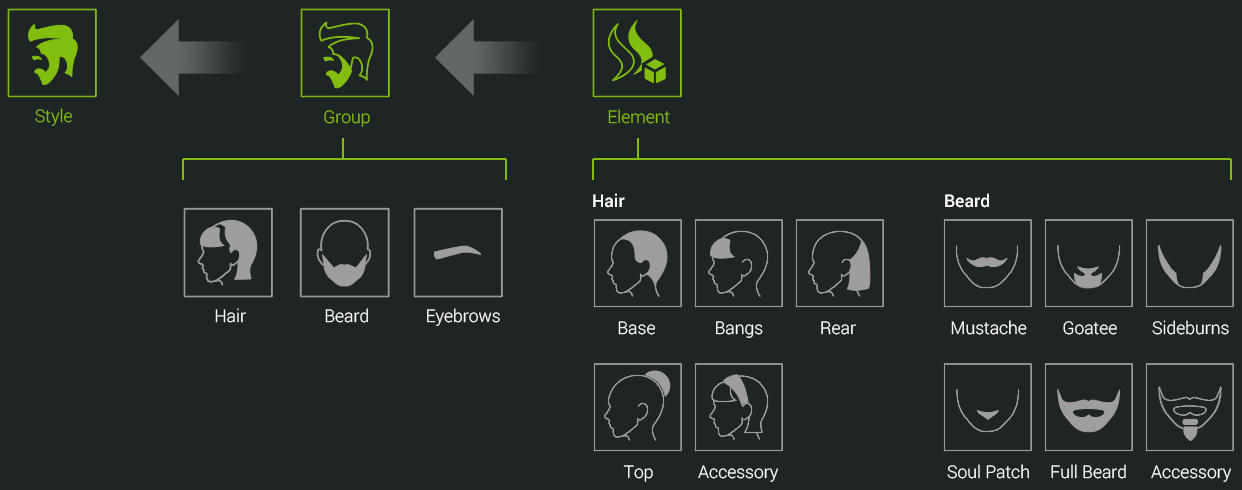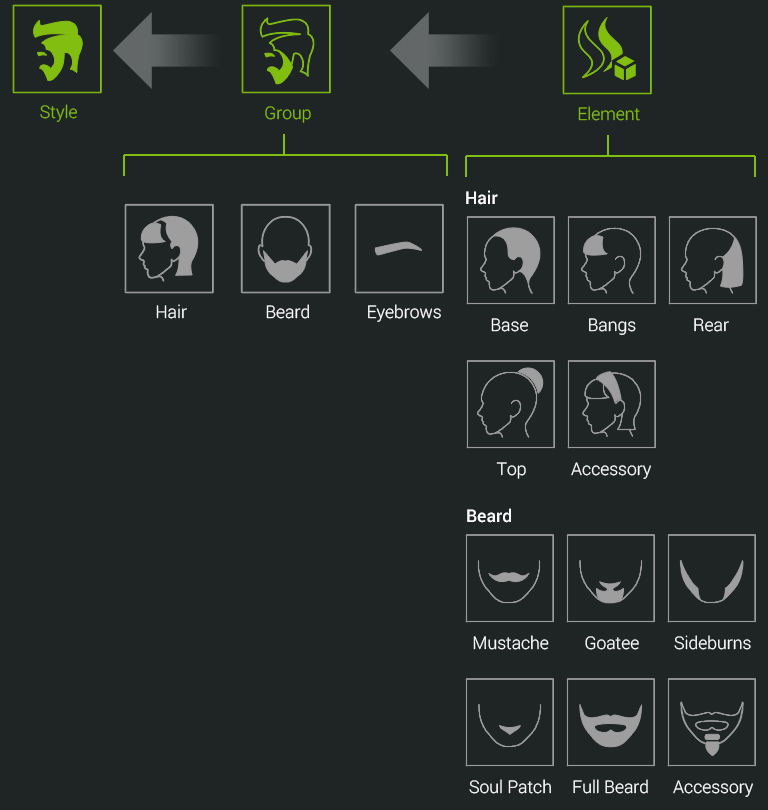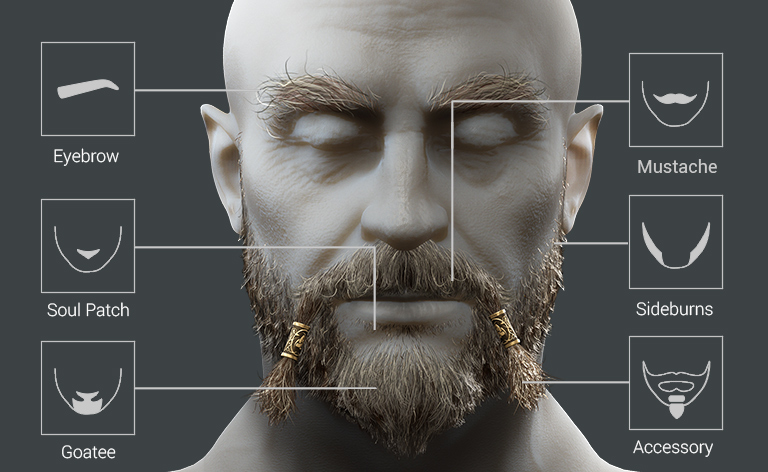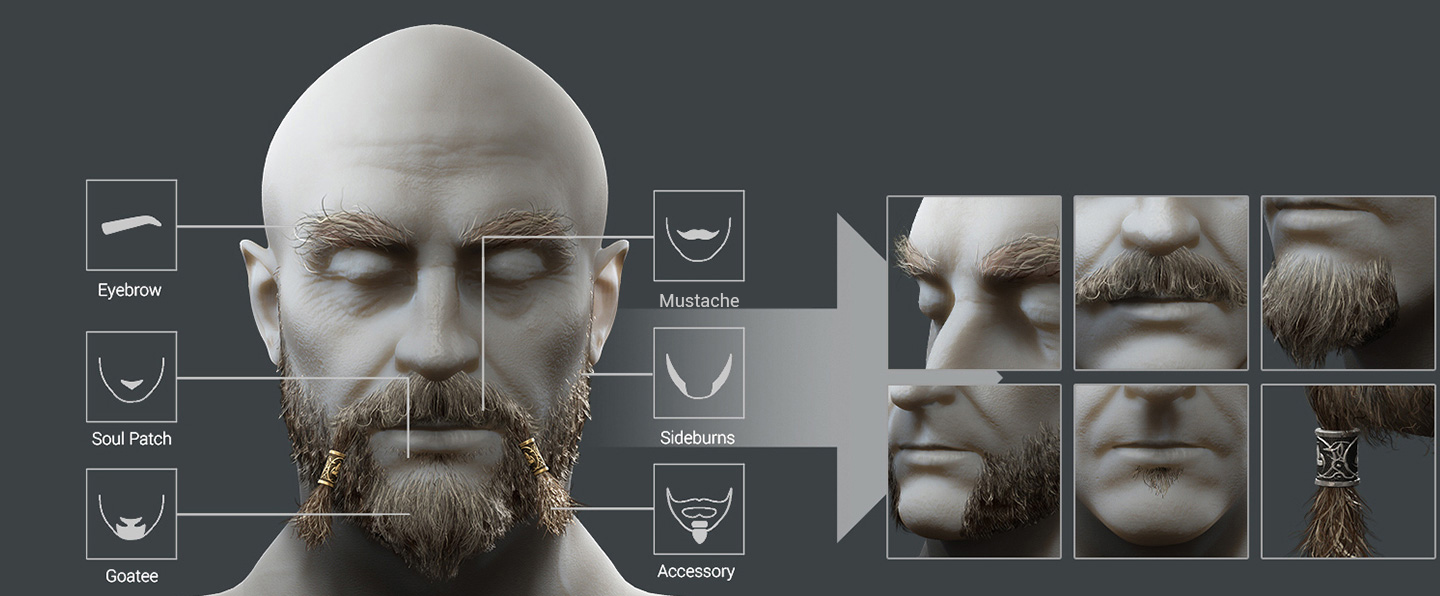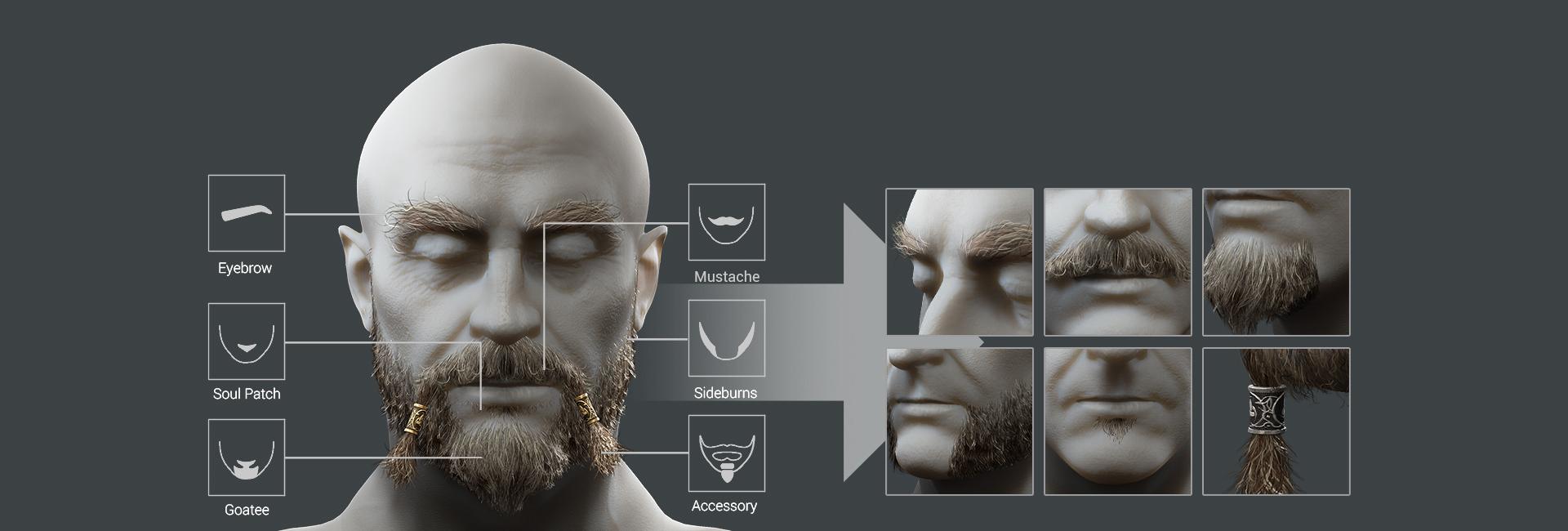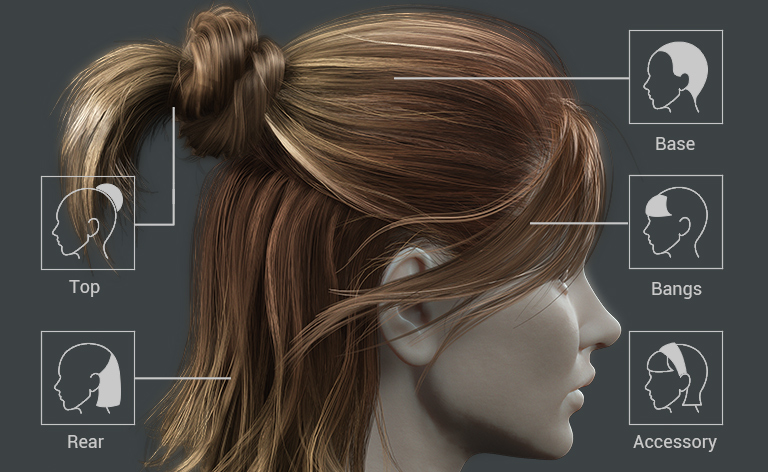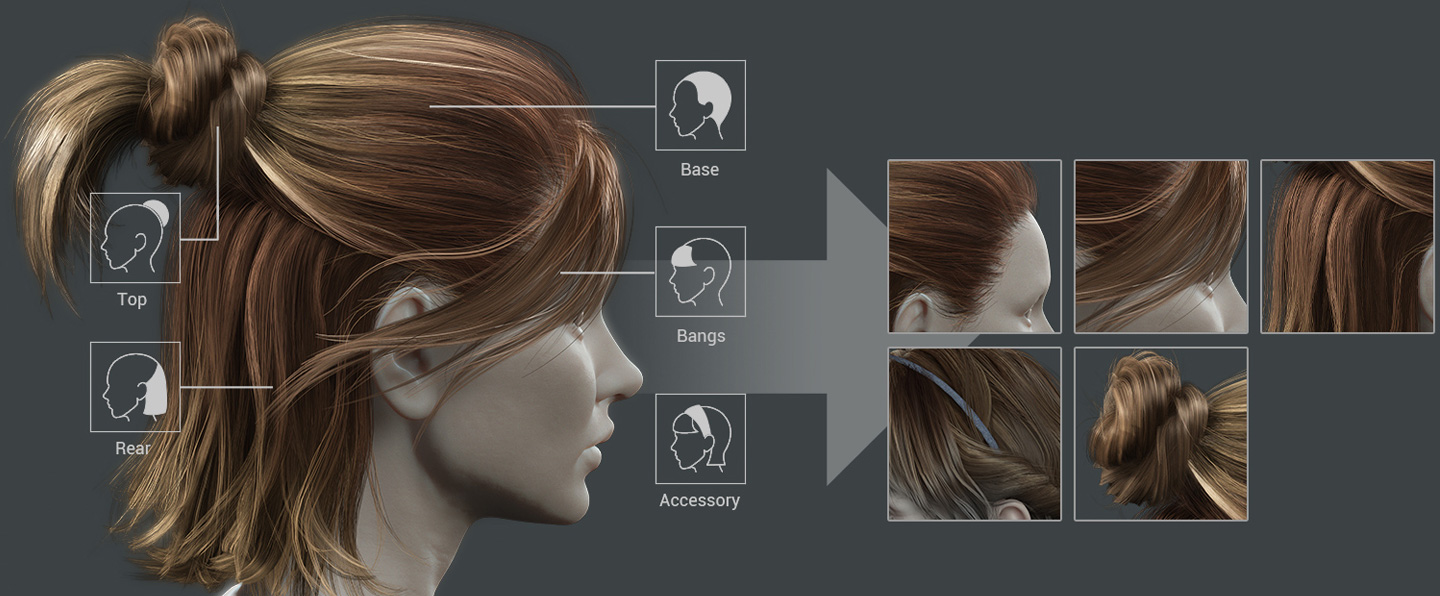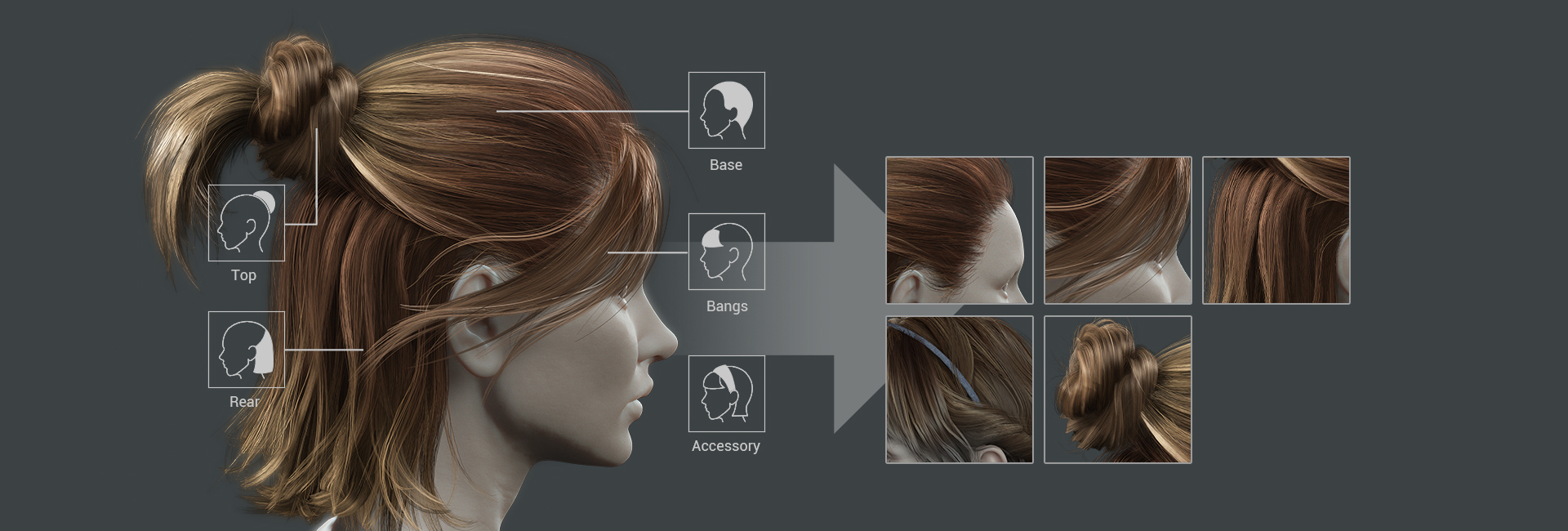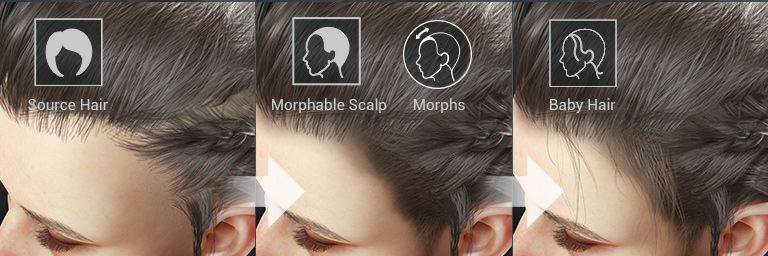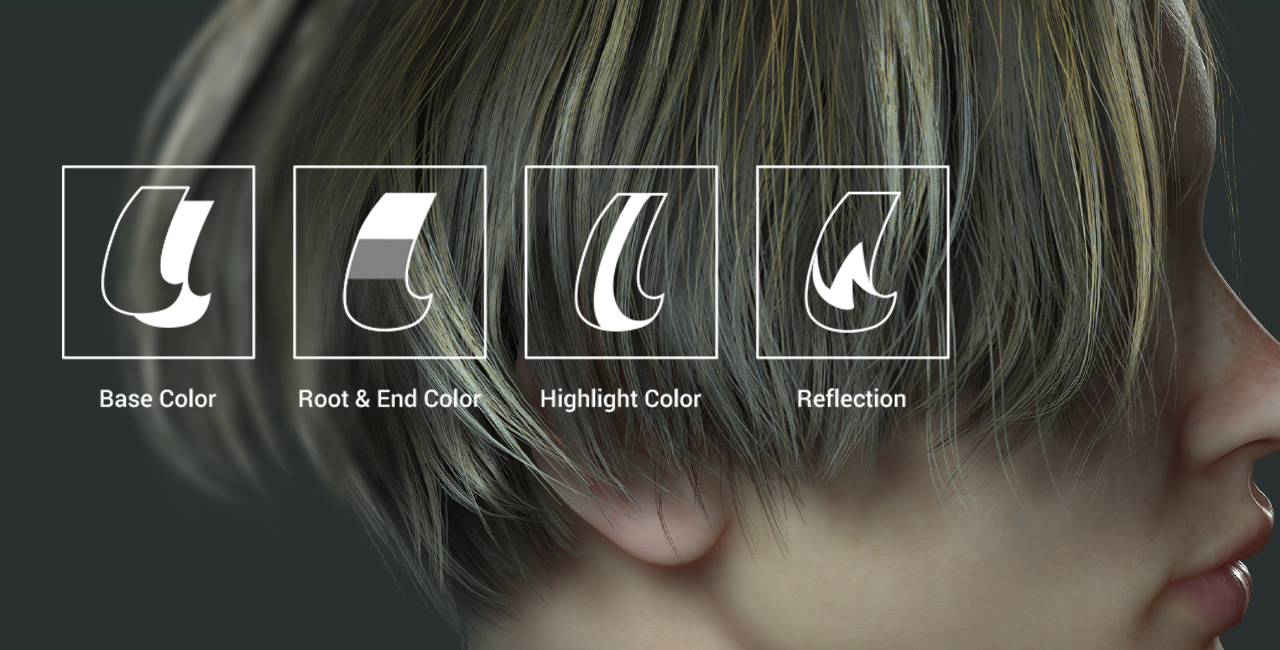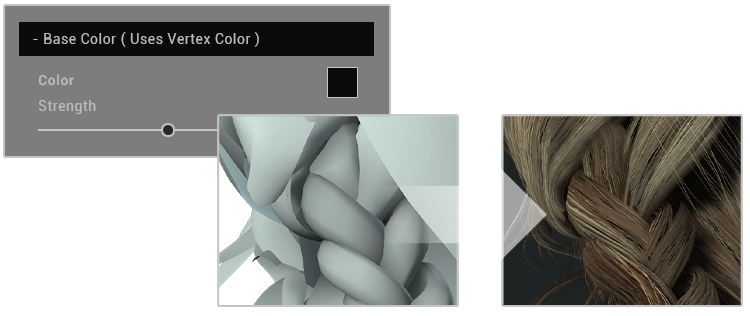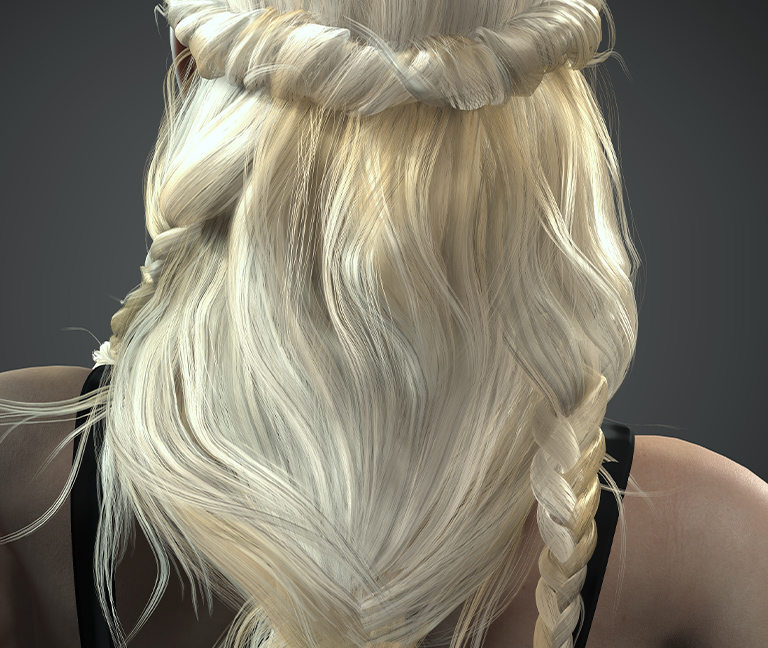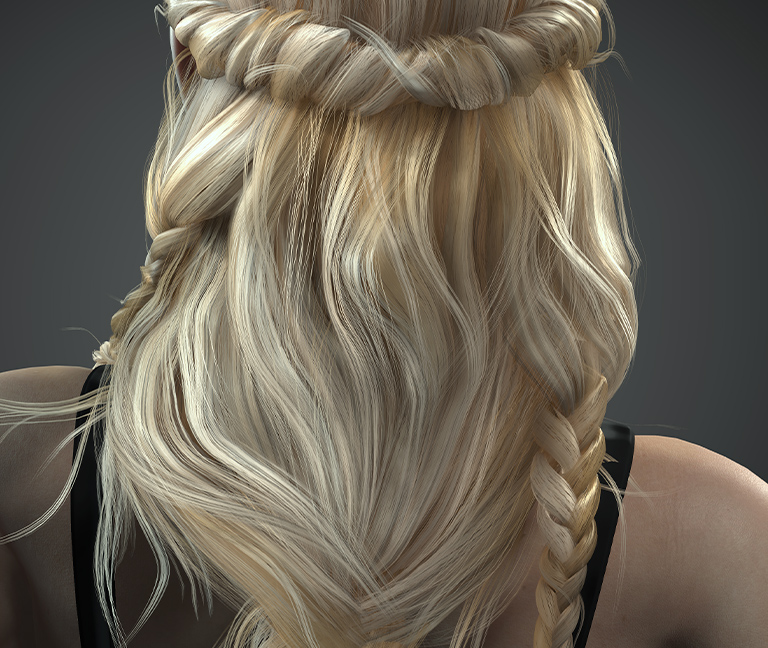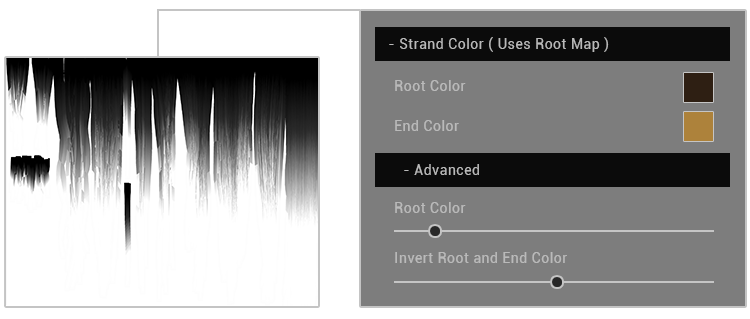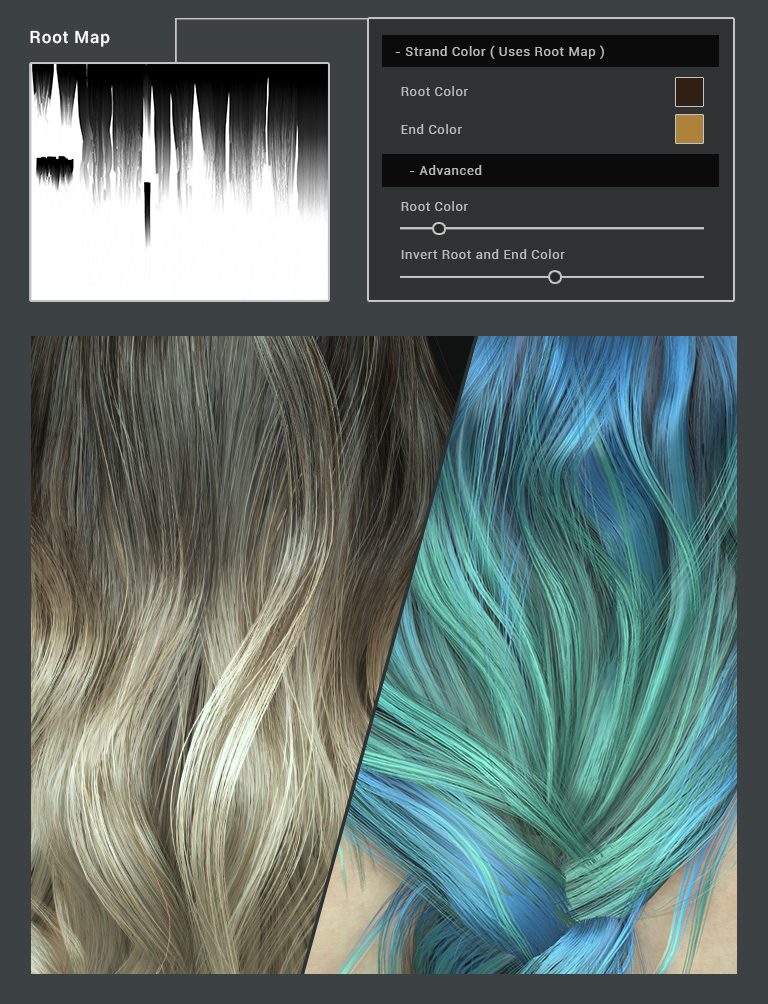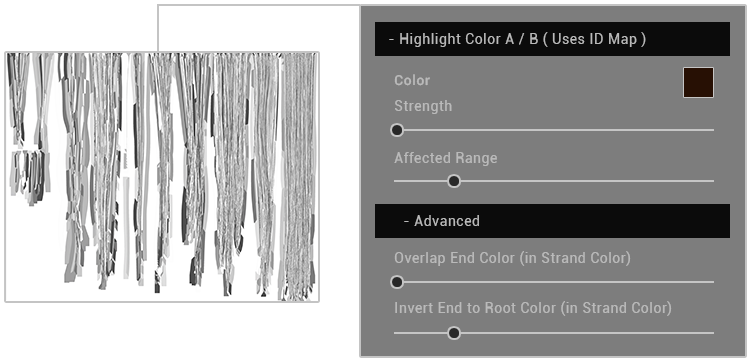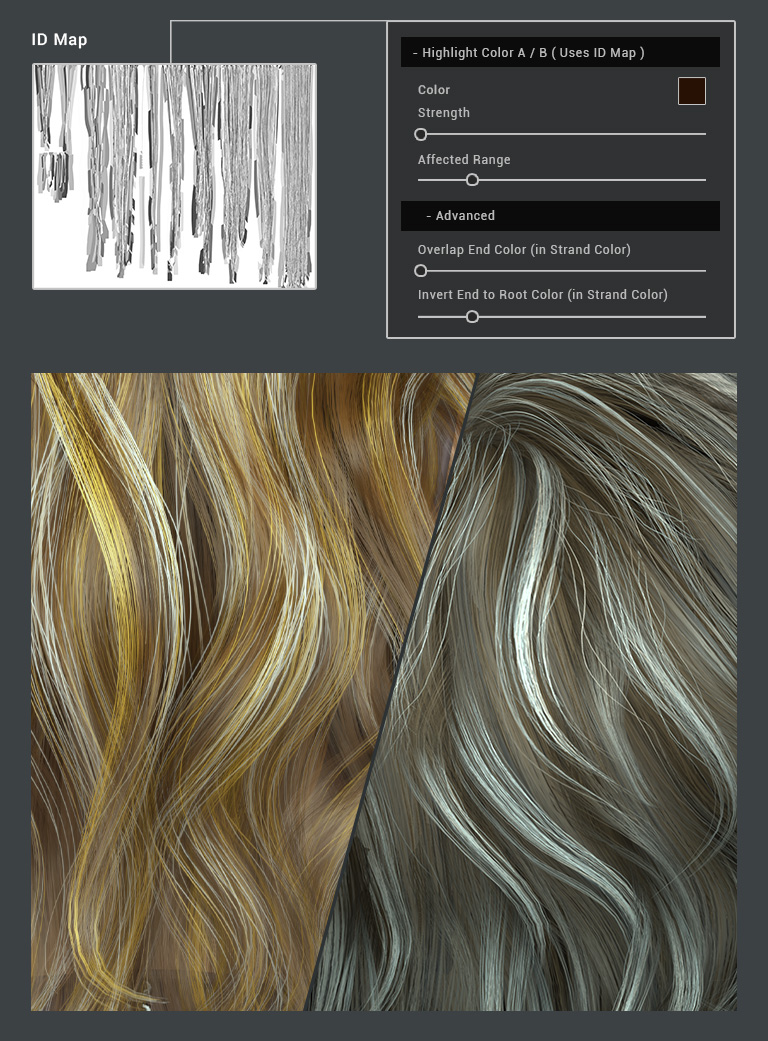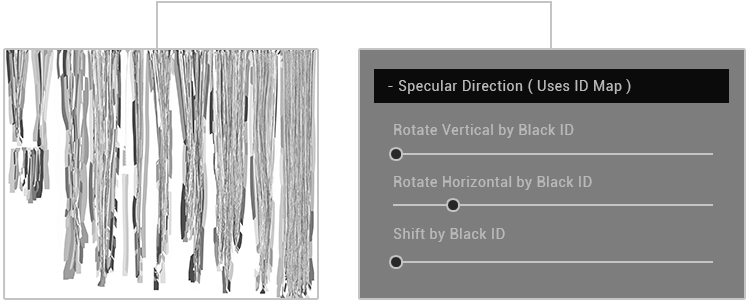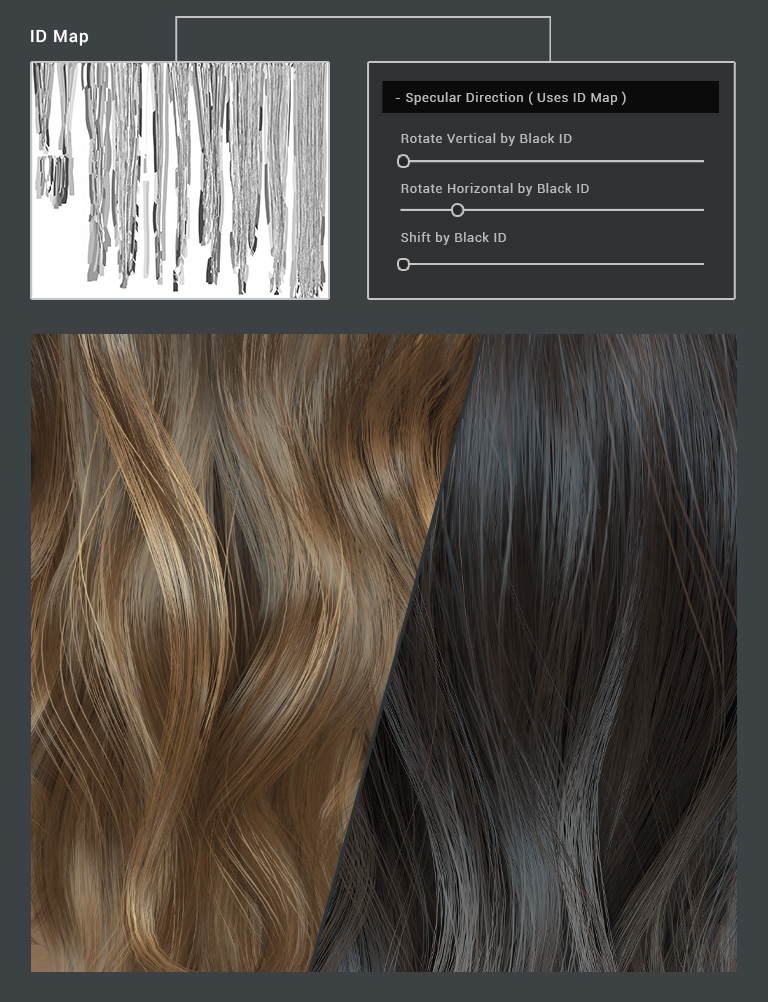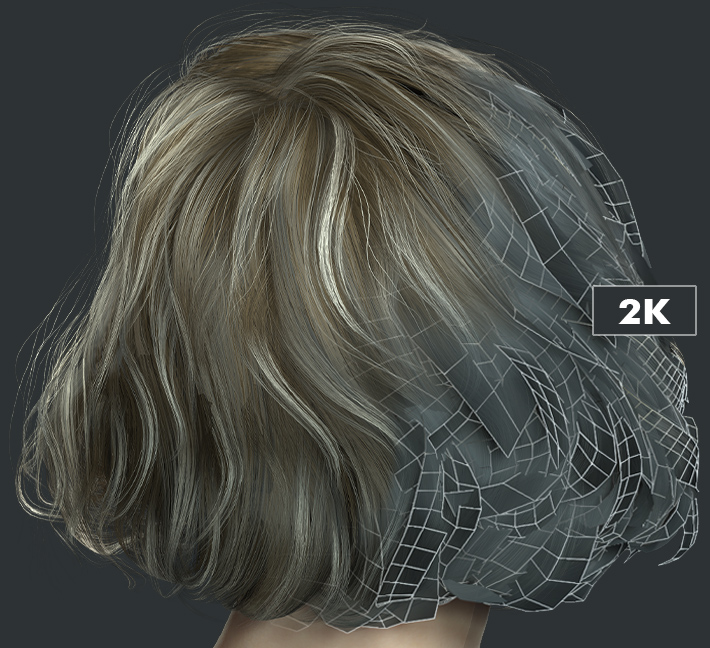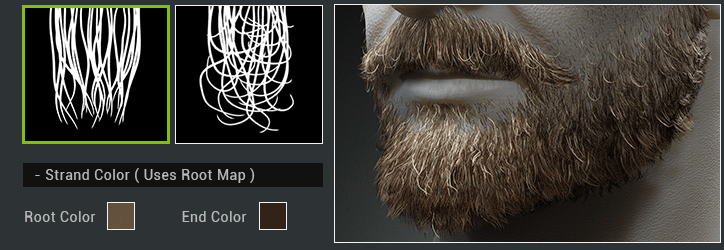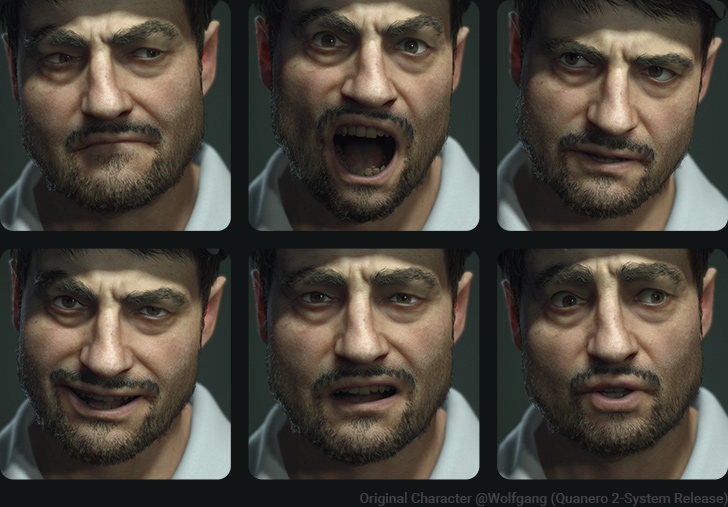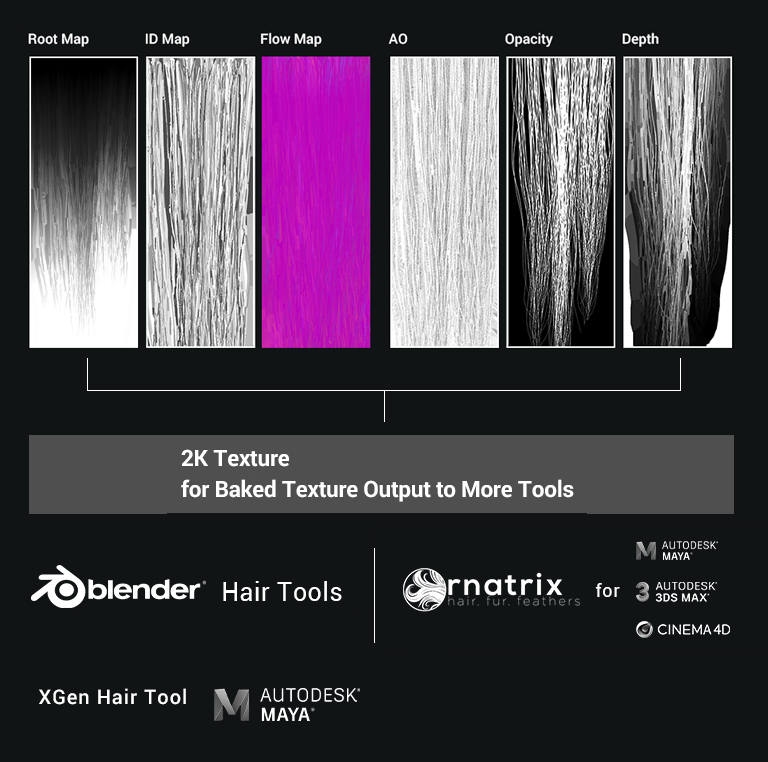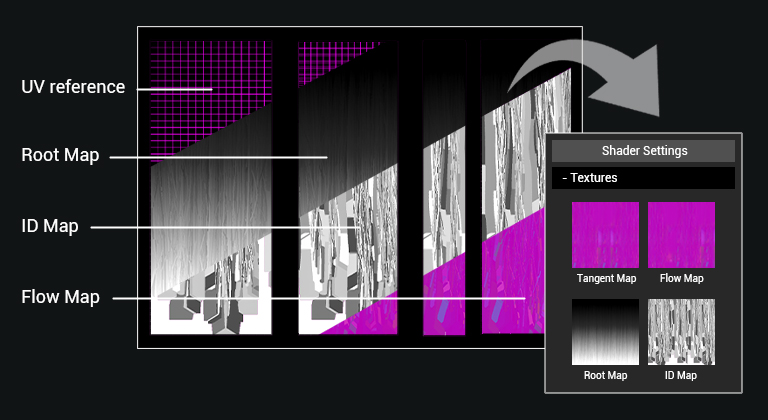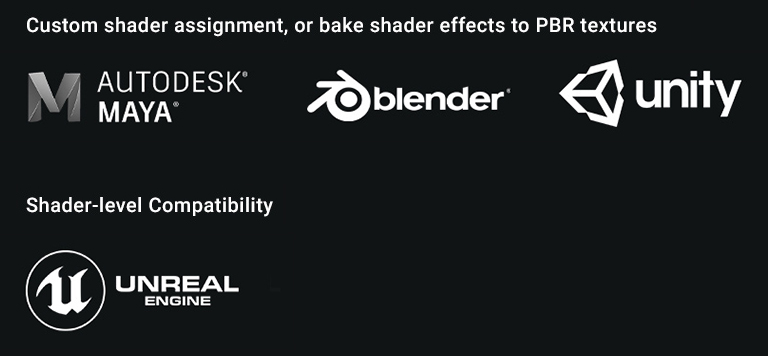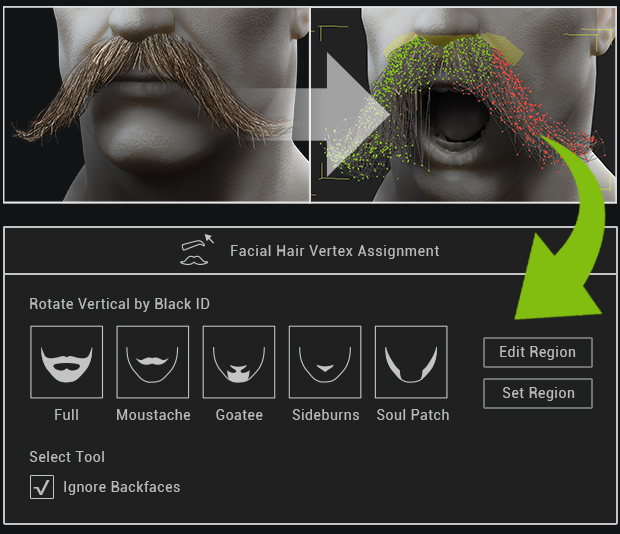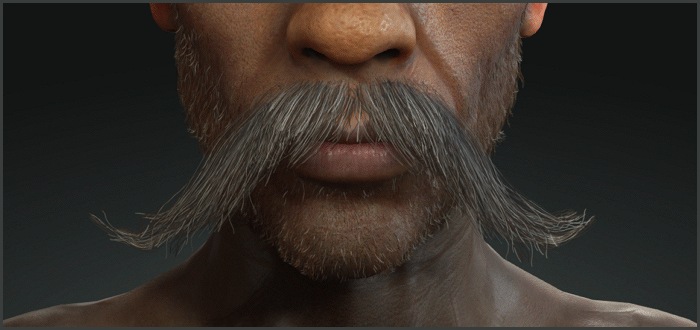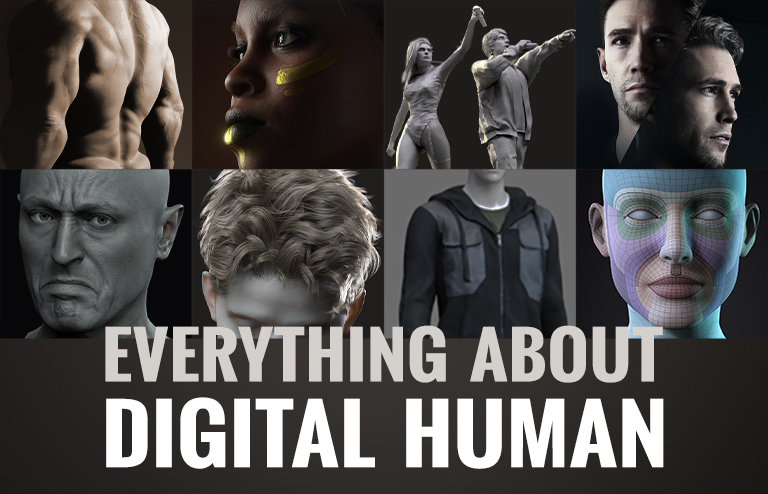The embedded Smart Hair system is designed to provide the most realistic yet performance-friendly Hair, Brows, and Beard for digital humans in games and films. The card based hair meshes are small in size, economical in texture resolution, and efficient for real-time rendering. The highly flexible ombré color gradients and specular variation are empowered by the Smart Hair Shader. The Component Design allows you to freely assemble different hair, and beard elements into unique hairstyles. The beard and brows can dynamically conform to any facial movements.
Component Design
Easily exchange beard, brows and hair elements
Smart Hair Shader
Realistic color variation and reflection controls
Designed for Performance
Small in size, fast to load, efficent for real-time animation
v3.4 New Update!
Newly-added - Smart Hair updates include 16 Elements (beard, hair and accessories), 8 Groups (beard, eyebrows and hair) and 3 Styles for the Component System and Smart Hair Shader design. Check Reallusion Hub to update to v3.4.
